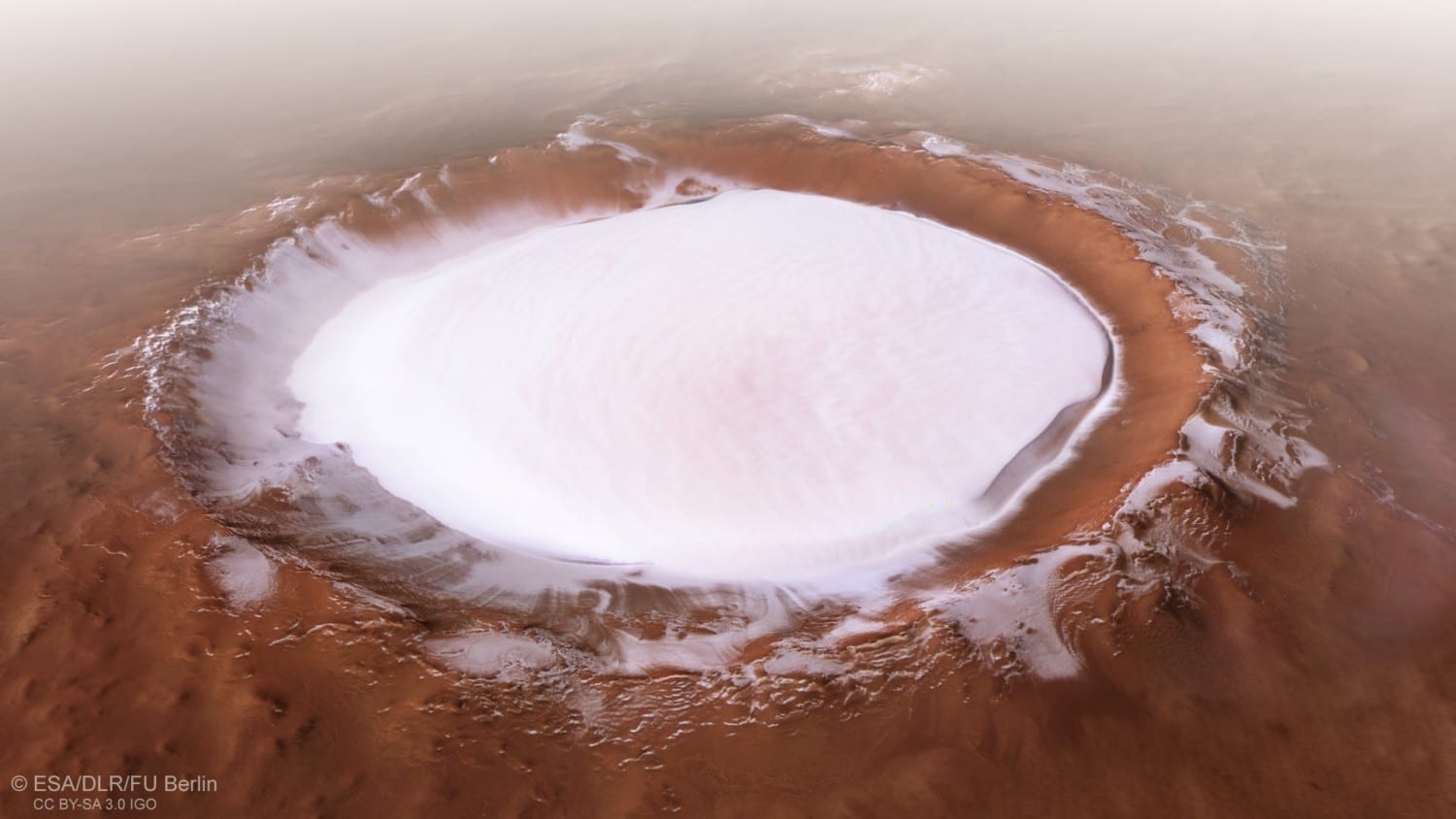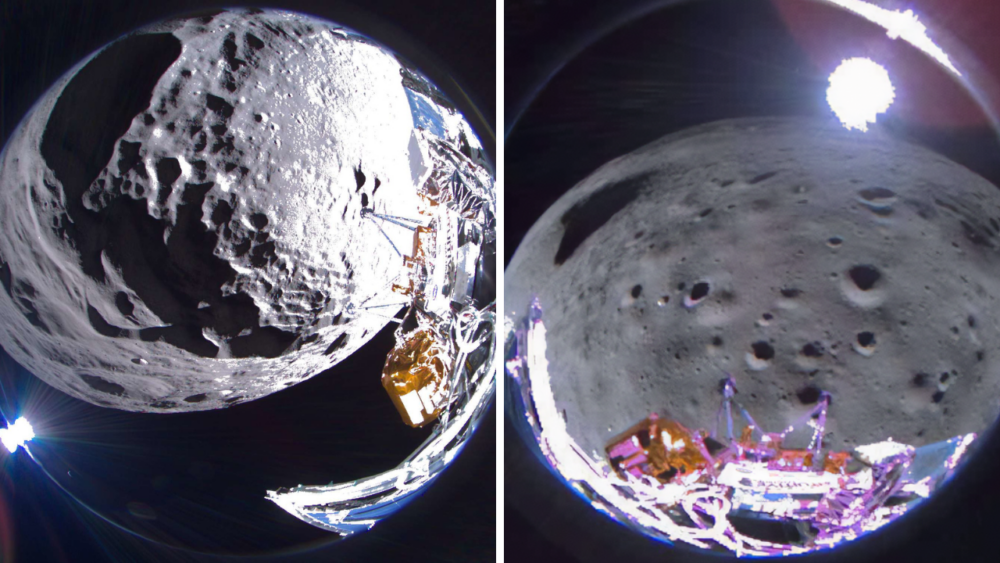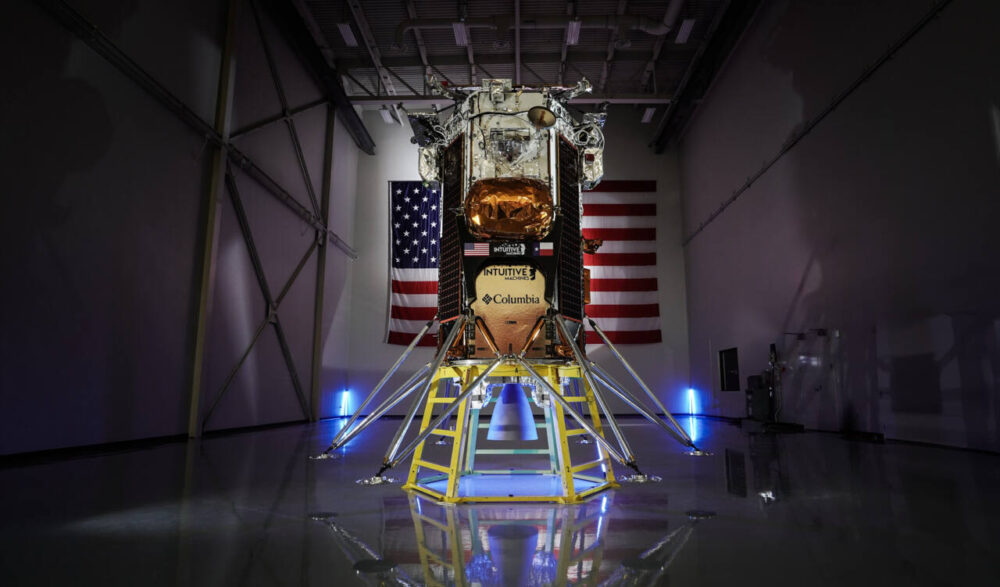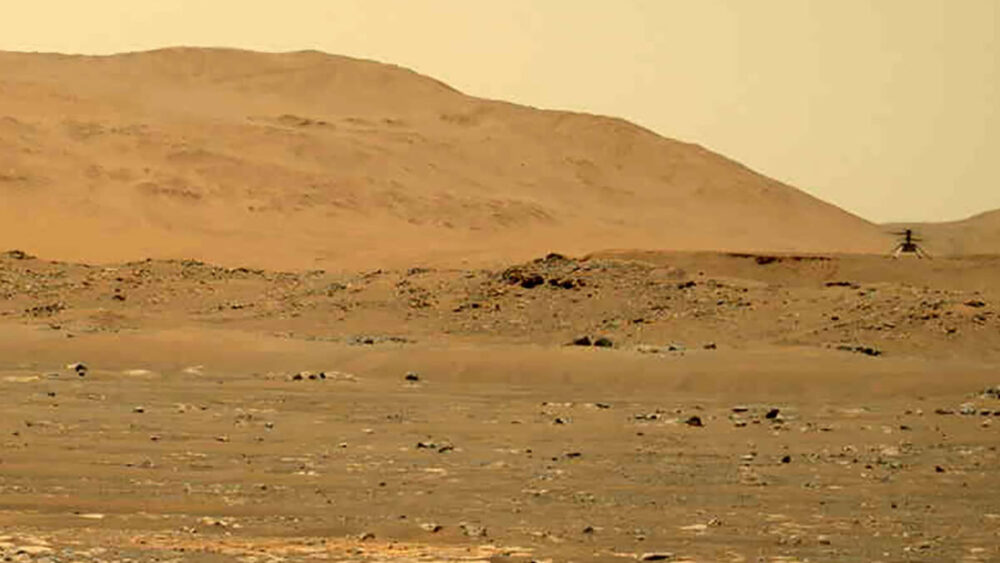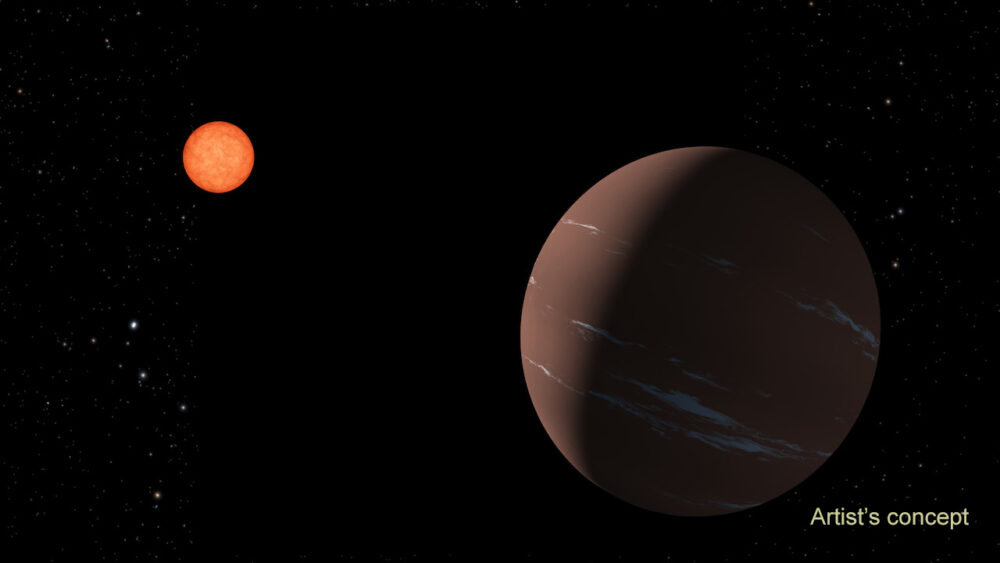This Ice-Filled Crater On Mars Looks Like A Skating Rink
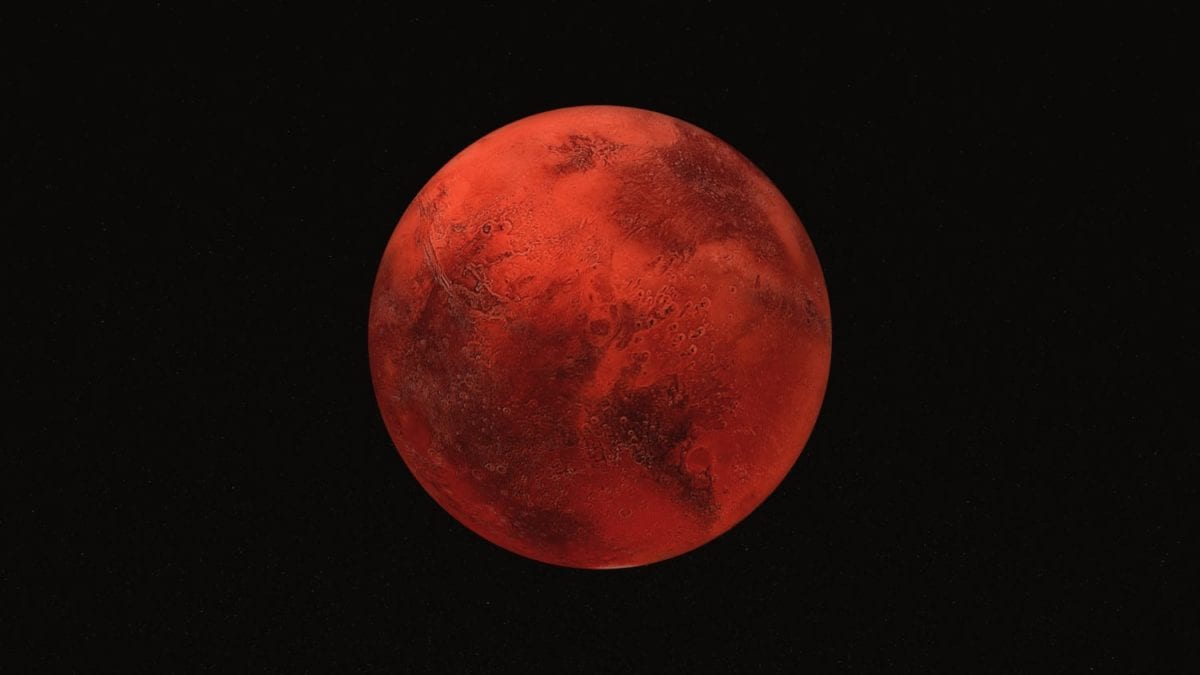
Ever wondered what it would be like to spend a winter on Mars? Thanks to a new photo that was recently released, we now have a glimpse into a snowy-looking Martian winter wonderland. (This might be fantastic news for Elon Musk and anyone hoping to join a colony and live on Mars someday.)
The image, taken by the European Space Agency’s Express spacecraft, shows a huge frozen crater that some people think looks like an alien ice-skating rink, albeit a massive-sized one.
The crater is estimated to be 51 miles wide and holds almost five times the amount of frozen water than Lake Erie. It was reportedly formed when an object slammed into the planet long ago and it has been named the Korolev Crater in honor of a Soviet space rocket engineer.
Although Mars has various seasons like Earth, it is thought that the ice stays frozen year-round because of the location of the crater near the planet’s polar caps. This might also be due in part to the ice’s thickness — ice inside the crater is reportedly a mile thick in some parts.
In scientist-speak, the phenomenon is explained as a “cold trap,” because of how deep the crater is, the air above it sinks into the crater and stays cold, too.
So, although most space-travel movies like “The Martian” and “The Red Planet” depict Mars as having a dusty and dry surface, we now know that there is definitely water on the planet, thanks to this photo. (Perhaps the next space movie that gets made about the red planet will feature Matt Damon growing potatoes in blizzard-like conditions.)
In the meantime, a new NASA robot touched down on the planet recently, so we may learn even more fun new facts about Mars in the months and years to come.


